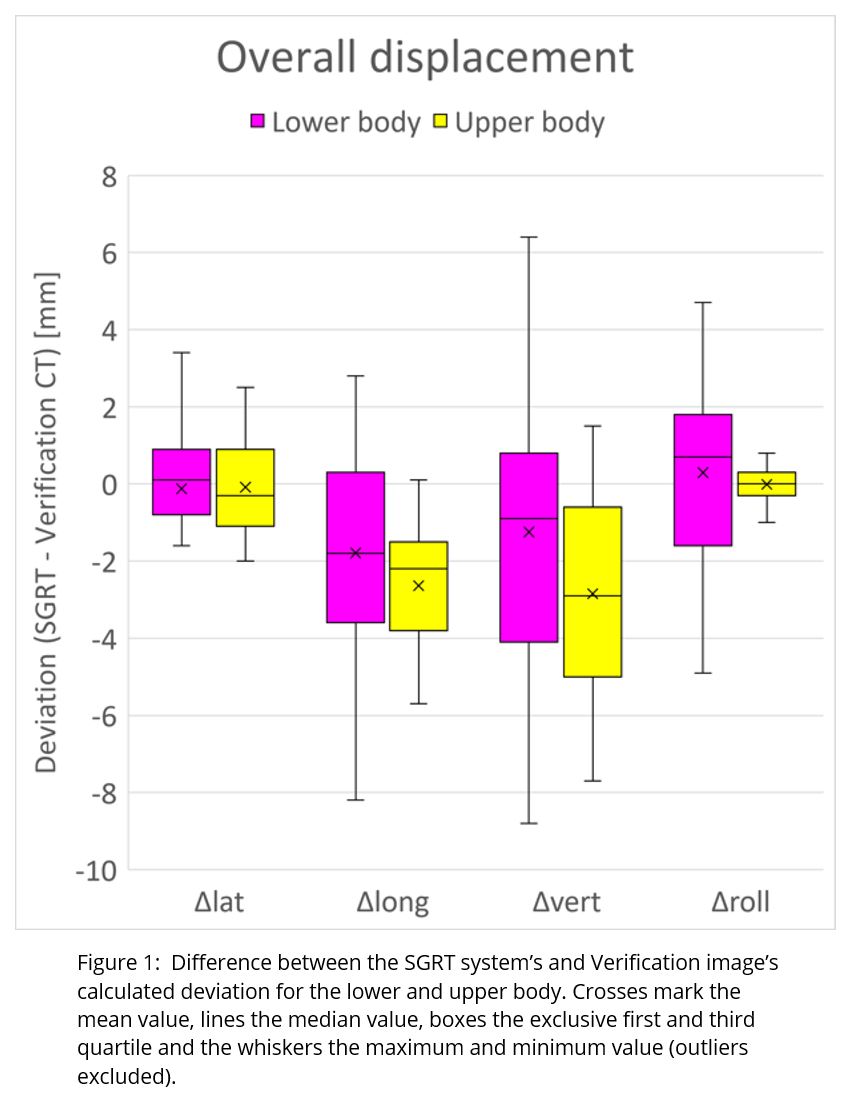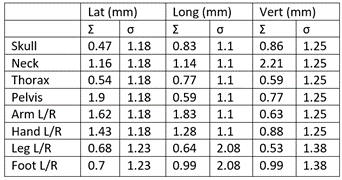The results suggest that SGRT for HT-TMI could allow for current PTV margins to be reduced. The SGRT-systems calculated position and the one measured after daily imaging, as an overall displacement for the whole body, is presented as a box plot (Figure 1). The calculated margins were non-isotropic and could be decreased for skull, neck, thorax, pelvis and legs, however, were kept the same for arms and increased in the vertical direction of the neck. The systematic (Σ) and random (σ) errors for each sub-CTV are presented in Table 1. With the new margins, in comparison to the original plan, the mean dose to OARs was reduced for the following organs: bladder, bowel bag, genitalia, heart, liver, kidneys, lungs, rectum. The median target coverage for D99.5% CTV per fraction was 1.92 (range 1.81 – 1.94) Gy and 1.92 (range 1.71 – 1.94) Gy for the original plans and the new plans, respectively. In the D99.5% CTV coverage no significant difference (p<0.05) was observed.


Table 1: Calculated systematic, Σ, and random, σ, error for each sub-CTV, measured from daily kVCT imaging.